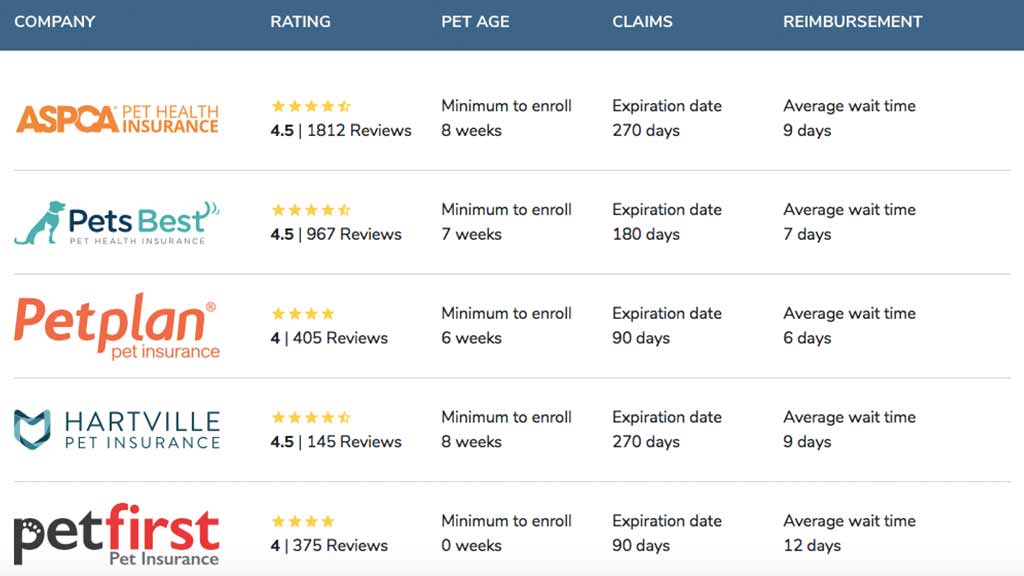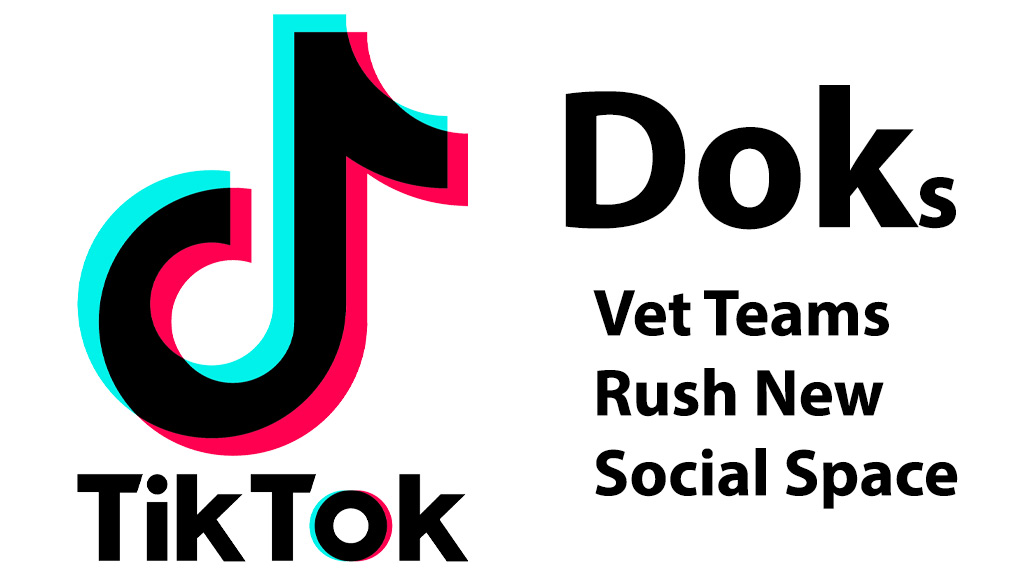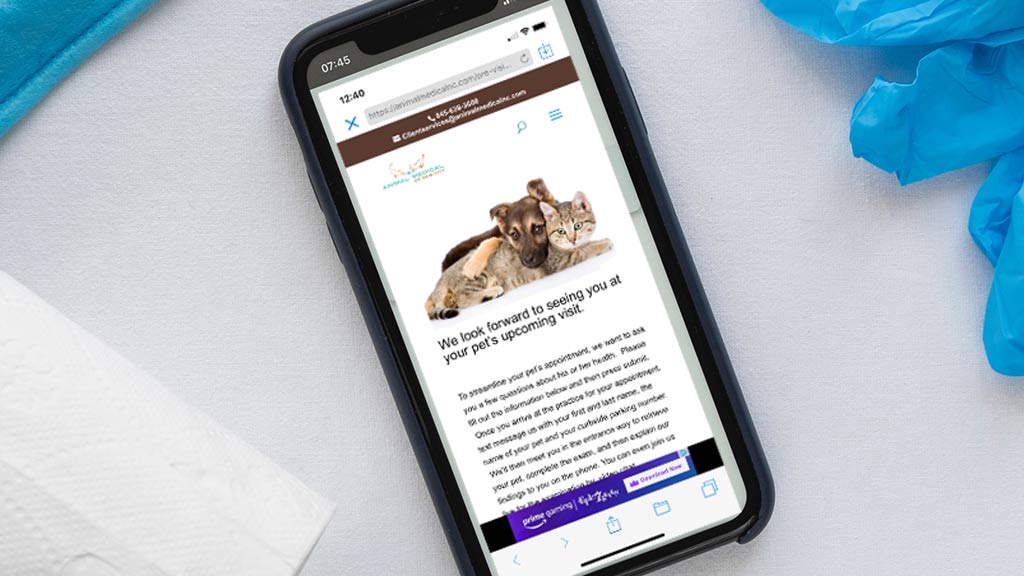Consumer habits, technology, and pet ownership have converged to give small veterinary practices a considerable competitive edge.
The Pandemic leveled the playing field for big and small businesses alike. Everyone has had to scramble to find new ways of doing business during a very dynamic time. Here’s a look at the most impactful changes in the veterinary business world and the tools available to help capture these new opportunities.
Focus On A Short Set Of Goals
Sure there have been a lot of changes over the past year in the way we all work, live, and interact, but there have only been a few big changes. Here are the new developments in pet owner and the marketplace that practice leaders should focus on when deciding where to invest most of their energy.
More Consumers Are Working From Home
In May of 2020, Facebook CEO Mark Zuckerberg announced that by 2025 as much as 50% of Facebook’s staff would be working from home. According to Zip Recruiter, the job listings that advertise work-from-home positions have increased 11 fold! In January 2021, The Atlantic Monthly reported that since the pandemic, a whopping 90% of Morgan Stanley’s employees have continued to work outside of the office.
While some of these employees will return to the office space, nearly every economic forecaster projects that the economy won’t achieve pre-pandemic numbers. During 2020, companies caught a glimpse of the enormous savings opportunities inherent in a work-from-home workforce. As a Morgan Stanley executive is quoted as saying on the topic, “The lesson has been learned.”
Takeaway: Working from home is now an established way of living. Veterinary leaders should consider how they can leverage the work-from-home trend to reduce the impact of chronic staff shortages, keep practices operational during additional waves of COVID infection, reduce payroll, and meet increasing employee demands for work/life balance.
Pet Adoption Is Up
After months of stay- at- home orders and no office workers to chitchat with, consumers filled the void with pets. For some it was a chance to foster, for others it was an addition to already existing fur family, and for yet another set, a long overdue chance to finally own a dog or cat. A 2020 poll of 1000 veterinary professionals by VitusVet showed that practices saw an overall 16% increase in new pet owners and a 12% increase in new pets. The not-for-profit Shelter Animals Count reported that overall adoption rates in the U.S. jumped by 15% in 2020, and Packaged Facts predicted that the final count of 2020 would show a 4% increase in pet ownership.
Takeaway: Leaders should burnish up new client marketing tactics, revisit how phone shoppers are handled, and look for additional ways to compete for a share of these newly available clients.
Consumers Connected With Online Stores
Big box stores with e-retail outlets saw as much as a 45% increase in business during the 2020. In June, e-Marketer predicted an 18% increase in sales by year’s end. More importantly, once consumers got a taste of online shopping, they returned for more. Geo-location devices on cell phones and desktops, and millions of online partnerships to collect, store, and sell consumer online browsing habits kept pressure on consumers to purchase. Most of you have already marveled that after one visit to a site that sells bed sheets, ads for bedding follow you all over the internet. Similarly all of us have experienced an increase in phone notifications. The apps on our phones are sharing our browsing habits and our physical location with online advertisers so promotions find us at just the right time and place for us to make a purchase.
Takeaway: Food, pharmacy, and OTC products that make up to 30% of our gross sales took another impactful hit. These sales are not going to come back. Leaders should reexamine their sales strategy and make sure that the team is focused on service, not product sales. Remember, if you don’t build a strong case for relevancy in the next few years to come, online stores and corporate competitors will soon deep six your business with a combination of unbeatable pricing and persistent online promotions.
$1000.00
$1000.00 referral fee for veterinarian applicants. Sign on bonuses also available. More.
Consumers Got Tech Savvy
In the Before Times, some veterinary practices took a stand against technological progress by arguing that their clients wouldn’t be able to keep up. That’s all in the past. 2020 ushered in a big jump in consumer’s interest in technology and an ability to use and manage it. A 2020 study by Sage summarized it well,“43% of respondents used text messaging more often. This was followed by an increase in voice calls (36%), social media (35%), and video calls (30%). Almost a quarter of people more frequently used email (24%), and just over one fifth played online games more often (22%). Taking all modes together, 46% of respondents had only increased their digital communication, without decreasing any of the methods.”
Takeaway: Don’t worry about your clients not being able to keep up. The entire world is relentlessly applying pressure on young and old to plug into the digital fray. If you encounter a tech-adverse man or woman, make a concession for that person’s needs, but otherwise forge ahead.
Consumers Tried Telehealth
According to the CDC, “During the first quarter of 2020, the number of telehealth visits increased by 50%, compared with the same period in 2019, with a 154% increase in visits noted in surveillance week 13 in 2020, compared with the same period in 2019.” Frost & Sullivan, global growth forecasters, predict a sevenfold growth in telehealth by 2025 – a five-year compound annual growth rate of 38.2%.
Though patient reviews about the telehealth experience have been mixed, this industry is not going away. The opportunities in timesavings, cost savings, and convenience are just too great.
Takeaway: Start exploring how telehealth can help you to manage chronic staff shortages, to manage additional corona virus shutdowns, and to stay competitive. Whether you believe in the service or not, your clients are likely going to expect it based on their experience with their own healthcare.
Technology and Tool Trends
Online Scheduling
Many of us are already managing our own healthcare online. Technology in the human space allows existing and prospective clients to search for a doctor or dentist, review his or her website, book an appointment time, and fill out a pre-visit questionnaire from their phone, tablet, or desktop computer. The experience is fast, hassle free, and available on demand.
Managing one’s appointment online is becoming increasingly available across a wide range of businesses and it’s starting to become an expectation for consumers. Just think of the efficiency of booking a flight online versus the time and cost of booking it over the phone. Veterinary practices that onboard online booking technology enable clients to schedule pet appointments at any time of day or night. They have better website-visitor conversion rates and decrease the amount of time client service reps spend fussing over the schedule.
Vetstoria is one of our industry’s best scheduling platforms. It allows clients to actually book, not request, an appointment. Rapport and Next In Line also provide clients with the ability to book directly into the software. All these services save practices precious payroll dollars and improve the client service experience.
Patient Records
Companies like SnoutID have sophisticated platforms that can manage many aspects of the client experience and work as a dashboard to ensure consistent outstanding customer service and communication. They also can take over the tedious job of obtaining medical records from previous veterinarians, politely, but persistently reaching out to the previous vet until the records are obtained. Then their team of veterinary professionals reviews the medical records and makes an-easy-to-read bulleted list of the most important information including vaccine history, medication history, and major and minor medical conditions.
Telehealth
Companies like AirVet have packaged a suite of services inside their app that, in addition to facilitating a live, virtual appointment, can greatly assist practices with time management. That’s essential if we are going to weather two of our largest issues: ongoing employee shortages and overbooked appointment schedules. Review this list of services available in telehealth apps and see if it doesn’t spark ideas on how implementing such a platform can better serve your clients and your business.
- Online scheduling
- Push notifications
- Video telemedicine options.
- Monetized rechecks and follow-up phone calls
- Effortless one-click pay
- Reminders
- Easy transfer of all client interactions into the PMS
- Two-way communication
- Automatically generated electronic to-do lists for employees so client requests don’t get missed
Telehealth is a big topic. For more information as well as ways that other practices have integrated it into their service line up visit https://www.bashhalow.com/6-reasons-why-veterinary-telemedicine-is-poised-to-go-off-the-hook/
Electronic Medical History Forms
Since we can’t seem to find any vets and licensed techs to hire, it’s up to us to manage the ones we do have more efficiently. One way to do that is to eliminate the time we spend taking a history from a client. Practices where technicians start an appointment typically add 10 minutes to the client appointment time with little added value.
Instead of wasting time taking a history during the visit, send the client a digital pre-visit patient history questionnaire. Once built, a link to the form can be automatically sent to clients when they receive their reminders, when their appointments are confirmed, or even after they enter the parking lot. Because these links open to sites that are mobile responsive, the forms can be read on a tablet, phone or desktop, and clients can respond to questions and submit answers directly on the screen. Responses go to the email of your choice and can be easily copied and pasted into the medical history. You can find out more about how what these forms look like and how to construct them by visiting this page: https://www.bashhalow.com/how-to-build-a-veterinary-history-form/
TikTok
TikTok is emerging as an excellent way to keep your existing clients entertained and educated at the same time. The learning curve for this very popular platform is an easy climb and its video editing capabilities are great. Record the fun and learning that happen at your practice every day (you only need 15 to 60 seconds of tape); upload it to TikTok; edit as needed using the app’s amazing tools; and then share it on any one of your existing social media audiences like Facebook or Instagram. Because of a glitch on the TikTok side, the video links in this resource don’t work on Safari or on iPhones, but otherwise, here is a great way to learn more about the app and how to use it to effortlessly promote your practice: https://www.bashhalow.com/using-tiktok-to-promote-your-veterinary-practice/
Ways To Boost Compliance To Pet Health Insurance
2020 May be the year that American pet owners turned the corner in pet insurance compliance. Industry insiders believe that the number of pet owners that signed up for pet insurance in 2020 jumped by 45%! Still, effectively educating clients about pet insurance options without swamping your team with more time consuming responsibilities is hard.
Practices have had great success with Pawlicy Advisor. Pawlicy Advisor is a marketplace for veterinary pet insurance that takes the extra step of helping clients make choices on pet insurance based on the pet’s individual needs and the owner’s budget. Their success rate at helping clients pick a policy is ten times that of what we achieve in practices. Pawlicy provides free lunch and learns for you team to help them understand the value of pet insurance and to market it successfully to your clients.
Conclusion
Yes, it’s been a challenging year, but technology and consumer habits have converged to provide us with lots of opportunities to conquer long standing operational issues. Review the changes of 2020 that you believe have been most impactful to your team and client base, and then select tools or ideas from the above list to improve.













